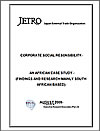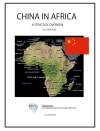 Stanbic Bank
Stanbic Bank
All data are collected in the Fiscal Year of 2008-2009.
Company Profile and History
Stanbic Bank Uganda Ltd. is a subsidiary of Stanbic Africa Holdings Ltd., which, in turn, is owned by the Standard Bank Group Ltd.
The bank was founded in Uganda as the National Bank of India in 1906. After several name changes, it became Grindlays Bank. In 1991, Standard Bank bought the Grindlays Bank network in Africa. The new owners renamed the bank Stanbic Bank (Uganda) Limited
Stanbic Bank (Uganda) Limited is licensed as a merchant banker, stockbroker and financial adviser by the Uganda Capital Markets Authority, which licensed the Uganda Securities Exchange in 1997.
In February 2002, Standard Bank bought Uganda Commercial Bank, a largely retail government-owned bank that operated a countrywide network consisting of 67 branches. Standard Bank merged the new outfit with its existing bank called Stanbic Bank (Uganda) Limited. The government of Uganda retained 10 percent ownership in the new combined bank. In November 2005, the government divested of their 10 percent ownership by floating their shares on the Uganda Securities Exchange. Standard Bank also floated 10 percent shareholding at the same time.
Standard Bank, based in Johannesburg, South Africa, has total assets of about US$81 billion and employs about 35 000 people worldwide. Its network spans 17 sub-Saharan countries (including South Africa) and extends to 21 countries on other continents, including the key financial centres of Europe, the United States and Asia.
In Country Location
17 Hannington Road, Kampala, Uganda; Tel: (+256-41) 234710/11/13-24 (+256-312) 224 111/600; Fax: (+256-41) 231-116
Services and Products
The three main pillars of business are Personal and Business Banking, Corporate and Investment Banking, and Wealth. Other services include corporate advisory services and transactional services such as cash management, trade-related and custodial services, complemented by electronic banking solutions. It provide finance such as term lending, structured debt and asset finance and structured trade and commodity finance, and offer trading and risk management solutions for foreign exchange, money markets and interest rates.
The Global Transactional Products & Services team provides a range of transactional services, primarily across Africa. The Corporate and Investment Banking division maintains a specific focus on industry sectors that are most relevant to emerging markets, including targeted financial solutions for infrastructure and services including energy, power, mining, construction and telecommunications in high-growth markets.
Number of Employees
1,258 employees in Uganda
Financial Information
In April 2009 Stanbic Uganda had an estimated asset valuation of US$850 million.

Market Share
Stanbic Uganda is the largest commercial bank in the country, accounting for 24 percent of total banking system assets and about 20 percent of bank branches in the country.
Business Objective
“We aspire to be a leading emerging markets financial services organisation. We do everything in our power to ensure that we provide our customers with the products, services and solutions to suit their needs, provided that everything we do for them is based on sound business principles. We understand that we earn the right to exist by providing appropriate long-term returns to our shareholders. We try extremely hard to meet our various targets and deliver on our commitments.”
Business Model
“The Group has played a central role in the development of the Southern African economy for more than 140 years. It has done this by constantly aligning its presence in the market place with the evolving needs of the region's economies, and delivering relevant banking and financial services.
The group continued to invest in technology and infrastructure mainly in its African operations as part of a strategy of confining its efforts to building robust operations in selected emerging markets. This investment has contributed to substantial cost growth. A strong capital position and healthy liquidity profile has positioned the group to take advantage of business opportunities in its chosen growth markets. The emerging markets focus insulated the group from the initial effects of the financial crisis, which originated in developed economies.
The strategic partnership of the two largest banks in Africa and China, Standard Bank and the Industrial and Commercial Bank of China (ICBC taking a 20% stake in Standard Bank), will generate significant cooperation benefits and new capacity for growth.”
Ownership of Business
Stanbic Africa Holdings has an 80 percent share in Stanbic Bank Uganda while Ugandan Institutions and Nationals hold 20 percent
Benefits Offered and Relations with Government
The Bank of Uganda is responsible for supervising, regulating, controlling and disciplining all financial institutions (Section 4 (2) (j) Bank of Uganda Act, Cap. 51 Laws of Uganda). The mission of the bank supervision function which is directly responsible for supervising financial institutions is to formulate and enforce statutory and prudential regulations and guidelines directed at creating a sound, safe and stable financial system/sector in which depositors’ funds are safe and the system contributes to sustainable economic growth.
The Financial Institutions Act (FIA) 2004 governs the regulation and supervision of financial institutions (banks and credit institutions) while the Micro-Finance Deposit-Taking Institutions Act (MDI) 2003 governs the regulation of micro-finance institutions. Foreign exchange transactions of authorised dealers and the public are conducted in line with the Foreign Exchange Act 2004.
The regulatory framework for financial institutions is underpinned by 10 implementing regulations gazetted as follows:
i. Statutory Instruments 2005, No. 41 - The Financial Institutions (Licensing) Regulations, 2005;
ii. Statutory Instruments 2005, No. 42 - The Financial Institutions (Capital Adequacy Requirements) Regulations, 2005;
iii. Statutory Instruments 2005, No. 43 - The Financial Institutions (Credit Classification and Provisioning) Regulations, 2005;
iv. Statutory Instruments 2005, No. 44 The Financial Institutions (Limits on Credit Concentration and Large Exposures) Regulations, 2005;
v. Statutory Instruments 2005, No. 45 - The Financial Institutions (Insider -Lending Limits) Regulations, 2005;
vi. Statutory Instruments, 2005 No. 46 - The Financial Institutions (Liquidity) Regulations, 2005;
vii. Statutory Instruments, 2005 No. 47 - The Financial Institutions (Corporate Governance) Regulations, 2005;
viii. Statutory Instruments, 2005 No. 48 - The Financial Institutions (Ownership and Control) Regulations, 2005;
ix. Statutory Instruments, 2005 No. 59 - The Financial Institutions (Credit Reference Bureaus) Regulations, 2005;
x. Statutory Instruments, 2006 No. 10 - The Foreign Exchange (Forex Bureaus and Money Remittance) Regulations, 2006.
All applicants are required to meet a range of substantive qualitative hurdles relating to:
i. Risk management: need for adequate capital set at a minimum of 4 billion Ushs for banks and 1 billion Ushs for non-bank financial institutions as well as demonstrated ability to maintain its capital funds, unimpaired by losses at the prescribed minimum amount at all times and to comply with the ongoing capital adequacy ratio;
ii. Quality of directors: review of substantial shareholders’ past banking and nonbanking business ventures and their integrity and standing in the business community, as well as the financial strength of all the substantial shareholders and their ability to provide further financial support, should it be needed (“fit and proper test”);
iii. Quality of management: Sufficient qualifications of staff to enable them to conduct business competently and competitively with existing financial institutions (“fit and proper test”);
iv. Governance and parent oversight (where applicable): With respect to foreign applicants, a level of cooperation between the Central Bank and the home country supervisor to permit the conduct of consolidated supervision. These requirements provide some assurance that only high quality entities are registered as banks.
A corner stone of the Bank of Uganda’s approach to bank supervision is that the primary responsibility for managing a bank, and the risks that it faces, should lie with the local boards, and management of the bank itself. For instance the regulations require that the Board of Directors recognize the critical importance of having timely and frank discussion of problems and prohibit corruption and bribery in corporate activities, both in internal dealings and external transactions. They also require Board of Directors to be actively involved in the financial institution’s financial affairs and risk management process.
Product Development
In mid-August 2009, the bank listed a seven-year note worth 30 billion shillings to fund medium and long-term lending.




